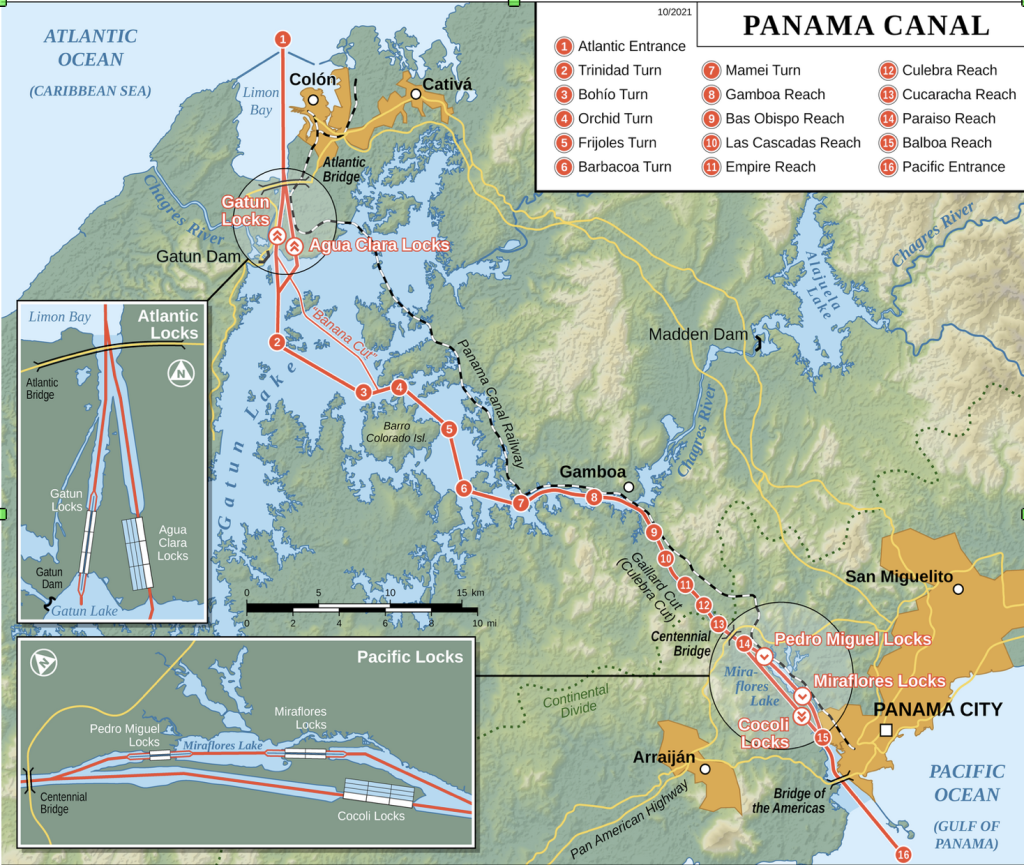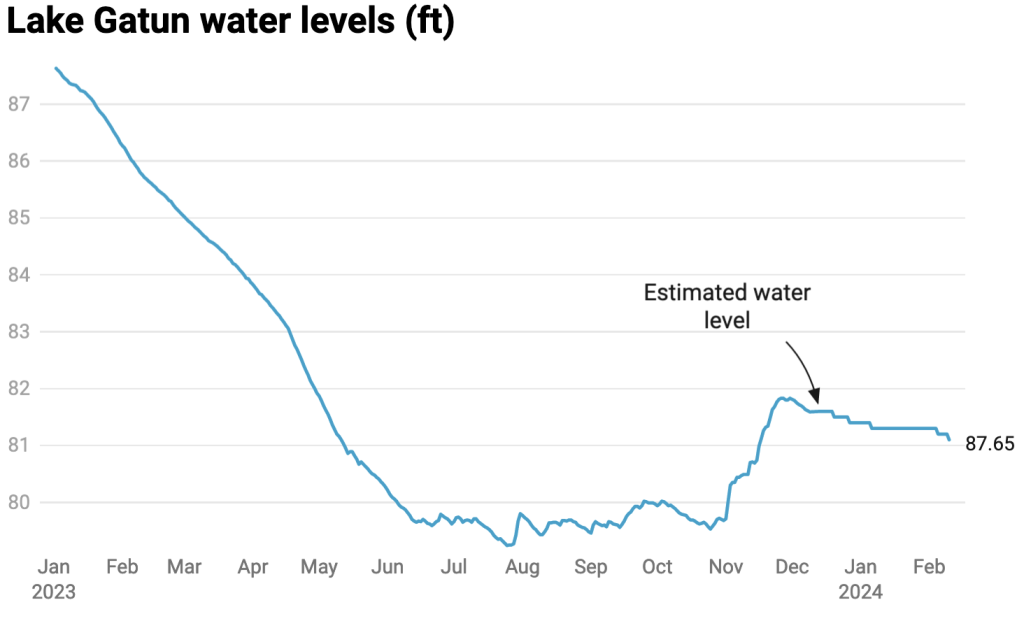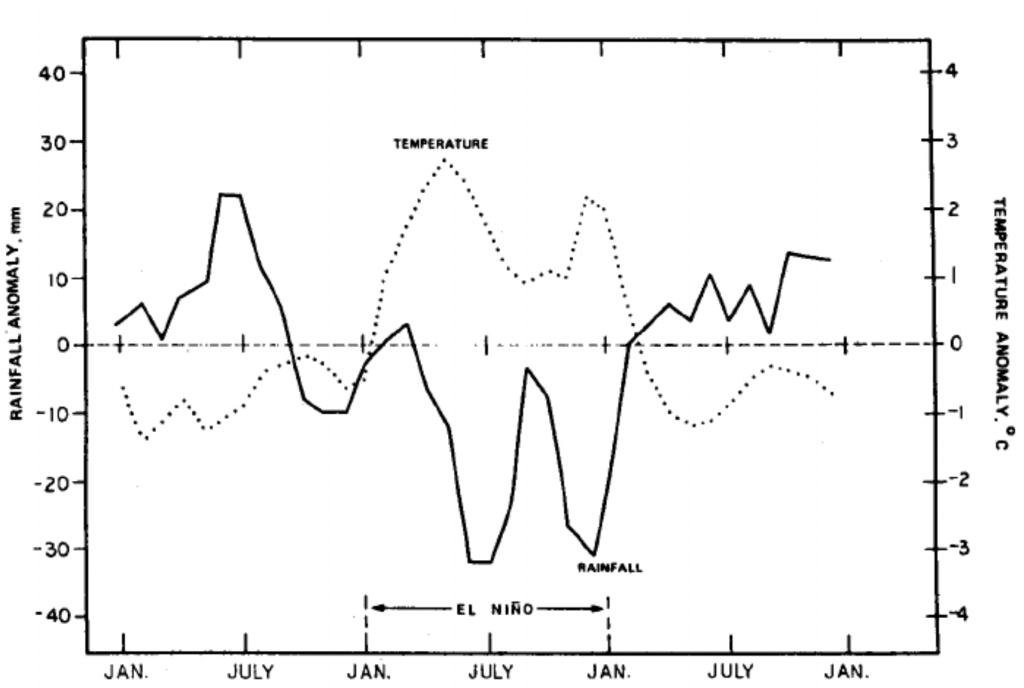February 1 our fellow sailors Franz and Mareike subscribed for the transit through the Panama Canal. Their date will be Februari 14. Two weeks waiting, not bad, but normally it is 5 to 7 days.
Five (5) days later, we applied the transit for the Ya. We got the message back that our transit would be March 23 at least….. Suddenly we are planned more than 6 weeks later. As well as any yacht applying now. How come?

The planning, the mess, and some causes
Why this mess? All of a sudden, more causes have come together. Firstly, there is the Carnival from 10 to 13 February. This mostly gives a delay of three to five days.
The cause is that the Panama Canal Authority lowered the number of transits. The locks were originally opened 31 times a day, but now it has brought down to 16 times. The problem lies in the lack of water in the Panamanian Lake Gatun. This immense lake provides the water to the Panama Canal, and the level is slowly falling.

Why is there a sudden water shortage?
Firstly, because the Panama Canal lies higher than the oceans. On the picture you see the profile of the canal and the oceans. It means that every time a lock opens on whatever side, the water will flow out into the ocean. Together the locks are about 26 meter higher and they can contain pretty large ships. When such a big lock is opened, there is about 15.000 m3 of water flowing out into the ocean. The Lake Gatun is also the drink water basin for Panama, and this amount is equal to the annual water use of 300 inhabitants.

.
Secondly, since 2016 there is a second set of locks in operation, for even bigger ships. So that doubles the loss of water. But one could question: did they not calculate beforehand if there would be sufficient water for such big extra locks? Yes, of course they did. Yes, they also took into account the smaller rainfalls in every El Nino year, bringing less water into the Gatun Lake.
But these numbers were all based on past data.

.
El Nino and climate change
2023 was an El Nino year. The Eastern Pacific Ocean becomes warmer as does the air temperature in Panama. The higher the temperature, the less the condensation in the air, so smaller the rainfalll.

What we see in this 2023 El Nino year, is an even higher rise of the temperature, so a deeper fall of the precipitation. It has never been lower since the meteorological measurements started, 143 years ago. It looks like a trend is developing of heavier El Nino years, with lesser precipitation.
Mr. Steven Paton, for 33 years the meteorological researcher on the Smithonian Institute in Panama, says: “Historically there has been a [rainfall] shortage on average once every 20 years due to major El Niño events. In the last 26 years this is the third major rainfall deficit. So it seems that something is changing our rainfall patterns.”
“The increase in frequency is consistent with climate change models,” he says, “but the climate change models have not come out saying for sure.” (source )
What now?
This is the everlasting problem with predicting climate change. Just as most of the organisations, the Panama Canal Authority responds and takes action when experiencing the consequenses. One can only accept and adapt. Such a late action costs time, money, damage.
When do you, take action?

